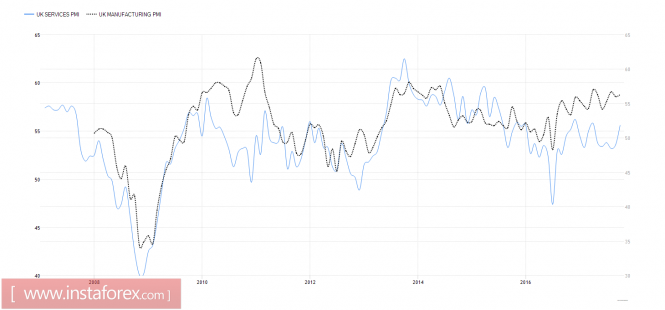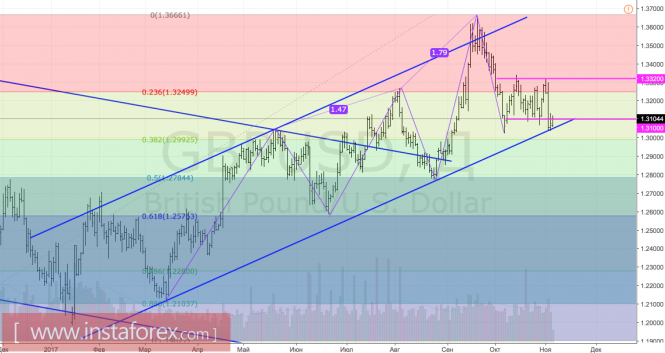The softness of the Bank of England has deprived the British pound of solid ground. Despite the first increase in the REPO rate over the last 10 years, the sterling has been marked by the worst daily dynamics since the referendum on the membership of the United Kingdom in the EU. The blame for all the decline can be attributed to the November meeting minutes of the MPC where it said that the tightening of the BoE's monetary policy can be faster than waiting for the futures market. If the Central Bank is satisfied with its testimony, the next increase in the REPO rate by 25 basis points will occur in November 2018.
For a long time, the hints of BoE representatives kept the sterling afloat. It initially seemed that the regulator is not going to give up the old practice. Unlike their colleagues from the ECB or the Bank of Japan, the BoE is pursuing the exact opposite goals. If Frankfurt and Tokyo are concerned about the inability of inflation to reach the target of 2%, then in the United Kingdom consumer prices not only exceeded it, but also climbed to the upper boundary of the predicted BoE range. The further growth of the indicator will undermine the already shaky confidence in the Central Bank so the strong pound is a kind of solution for a lot of their troubles. It leads to a reduction in the cost of imports and a reduction in the cost of production. In other words, it fulfills the role of a safety cushion in the process of CPI growth.
In this respect, the "hawkish" speech of Deputy Governor Ben Broadbent looks like a proof of the theory above. The MPC representative noted that the Bank of England is likely to have at least twice more to raise the REPO rate since the risks of overclocking inflation outweigh the danger of the economy slipping into a recession. However, Broadbent believes that GDP growth in the coming years will remain sluggish due to the fact that productivity is unlikely to recover to pre-crisis levels while employment growth will not be as fast as in recent years.
Thus, the fate of the pound depends on macroeconomic statistics and political risks. If the indicators signal an improvement in the health of the economy of the United Kingdom, the expectations of the futures market on the monetary restriction of BoE will begin to shift for the first half of 2018. This will support the bulls of the GBP / USD and vice versa. What's important will be the progress of the negotiations on Brexit. The next round of talks is scheduled for November 9. The first factor could be tested after the release of important statistics on business activity in Britain and the US labor market. While the US dollar was actively advancing on the G10 currencies, the sterling remained stable against the backdrop of growth in Britain's purchasing managers index for the services sector to the highest mark in the last six months. The dynamics of PMI gives us hope that GDP growth in the 4th quarter will be better than in the previous three.
Dynamics of business activity in Britain

Source: Trading Economics.
Technically, a breakthrough in the lower limit of the upward long-term trading channel will increase the risk of GBP / USD falling to 1.28 and 1.26. On the contrary, the return of sterling to the range of $ 1.31-1.332 will contribute to the development of consolidation.
GBP / USD, daily chart

